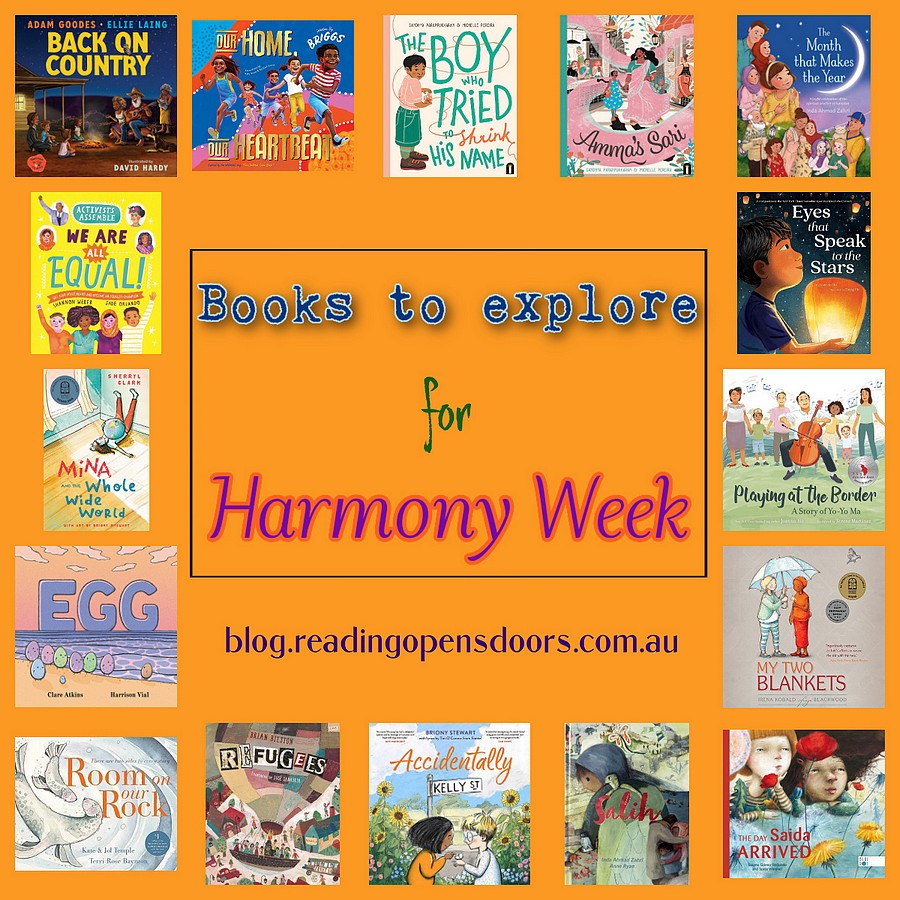
Harmony Week celebrates the richness of diversity and all of the different cultures in Australia. Australia is a culturally diverse country and is home to the oldest continuous culture on earth and the most recent data from the Australian Bureau of Statistics from the 2021 census reports that just over seven million people, 27.6 per cent of the population, were born overseas. Almost half of the population have at least one parent born overseas (48.2%), and almost a quarter of the population (24.8%) speak a language other than English at home. Harmony Week is about inclusiveness, respect and a sense of belonging for everyone. Featured here is a collection of books that reflect rich and diverse experiences.
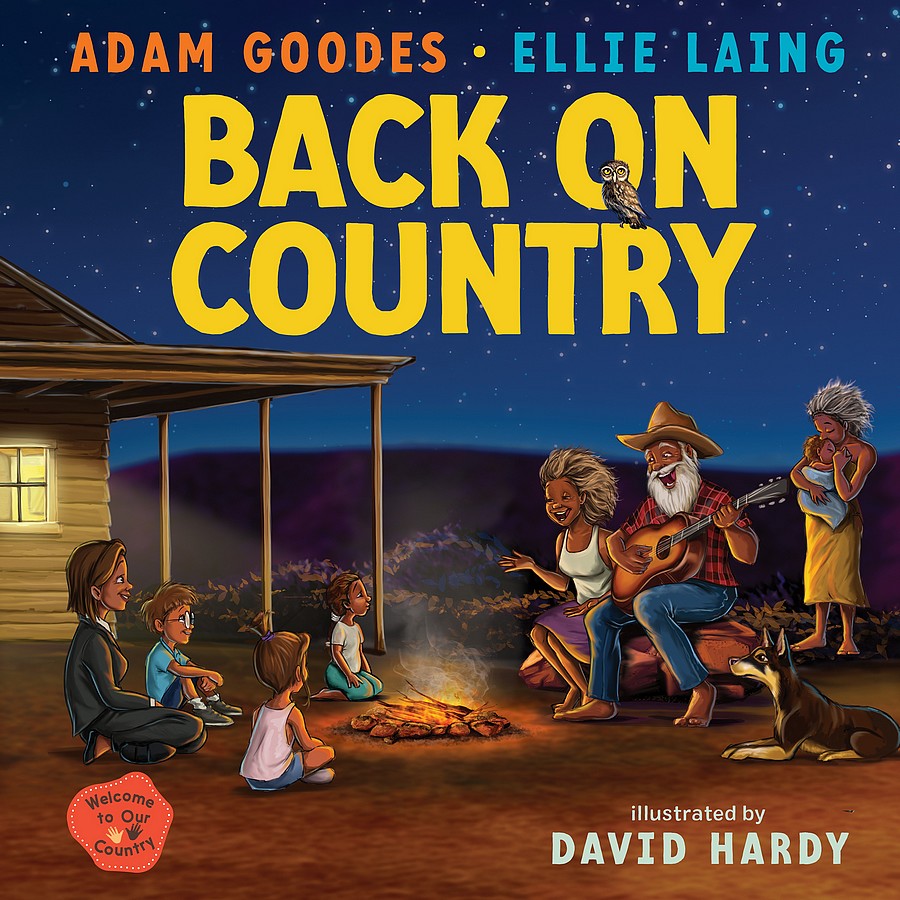
Back On Country: Welcome to Our Country by Adam Goodes, an Adnyamathanha and Narungga man together with Ellie Laing, a communications professional, illustrated by David Hardy, a Barkindji man and published by Allen and Unwin is a story about a mother from the Adnyamathanha people of the Flinders Ranges in South Australia taking her children, Lucy and David, back to Country to meet family, learn from Elders, listen to stories (oral as well as those stories told in artworks on rock walls and from the stars) about their Aboriginal culture and history. This story highlights the deep connection First Nations people have to Country and how Country is inherent to identity. Country is a teacher (of culture, language, traditions and history) and exploring Country with Elders is an opportunity for them to pass on knowledge, lessons and family lore that are tens of thousands of years old. This is the third book in the Welcome to Our Country series, the first being Somebody’s Land and the second, Ceremony.
In this story the reader has the privilege of joining David and Lucy as they take a road trip back to Country. As soon as they arrive, the warmth and joy that radiates from the pages when they meet their Nanna and Uncle is palpable. The children are exposed to their Aboriginal kinship structure and Adnyamathanha words which are embedded throughout the book (a visual glossary is provided on the endpapers with the English meaning). As night falls, a Welcome to Country ceremony occurs and involves singing, participating in a smoking ceremony and listening to stories under an inky star filled sky.
A detailed review for Back on Country: Welcome to Our Country has been written in an earlier Reading Opens Doors blog post here.
A review for Somebody’s Land can be found on the Reading Opens Doors blog here.
A review for Ceremony can be found on the Reading Opens Doors blog here.
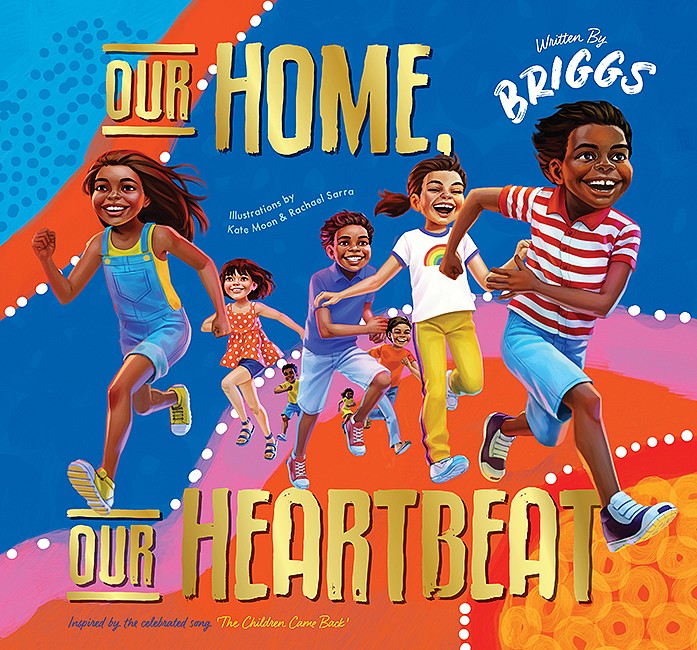
Our Home Our Heartbeat by Adam Briggs and illustrated by Kate Moon and Rachael Sarra inspired by Adam Brigss’ song, ‘The Children Came Back’ which is a sequel to Archie Roach’s song, ‘Took the Children Away’, is an uplifting celebration of First Nations people past and present, their achievements, success and contributions to Australia and on the world stage across a diverse range of fields. This book is a call to action to emerging generations that strength lies in the history of the oldest continuous culture on earth. It is a source of inspiration and a “rallying call to emerging generations forging their own path”. Inclusivity is at the heart of this book.
This story begins on the endpapers which feature portraits of twenty-one First Nations people. Straight away a connection can be made – a face can be put to a name and a host of role models can be seen, First Nations people to look up to and be inspired by. These twenty people inspire readers to dream big because they have proven that dreams and greatness can be achieved.
This book features children with different physical abilities and different skin tones walking in the shoes of Aboriginal ‘greats’, seeing themselves in them. These children are emulating their heroes, such a powerful story for positive representation.
The illustrations are bold and vibrant with each of the characters taking centre stage on a coloured and patterned background.
Throughout the story, there are themes relating to connection and community and at the end of the book this message is strengthened when the reader sees the power that comes from connecting with the past, culture and family.
At the end of the book there is further information about each of the twenty-one “Indigenous legends past and present”.

The Boy Who Tried To Shrink His Name by Sandhya Parappukkaran, illustrated by Michelle Pereira and published by Bright Light an imprint of Hardie Grant Children’s Publishing, is a 2022 CBCA Notable and is also shortlisted for the 2022 CBCA Award for New Illustrator. This is an uplifting and beautiful story, told from the perspective of a young South East Asian boy and is about celebrating cultural heritage and individuality. This book is about not shrinking down in an attempt to fit in and appreciating the beauty in difference as well as the power of a person’s name which connects people not only to their identity, but family and cultural heritage.
The young boy in this story, Zimdalamashkermishkada, is on the precipice of change as he is about to start at a new school. This new beginning heightens his anxiousness about his extremely long name, that no one can seem to pronounce and which he is often asked to repeat. It draws unwanted attention and this causes all sorts of knots and twists to slither around and unravel in his tummy. He wishes he could shrink his name and try as he does, this quest to do so eludes him as his name “springs back to life like a scared pufferfish at sea”.
Zimdalamashkermishkada finds a friend in Elly. They practise tricks on their skate boards after school and Elly enjoys spending time with Zimdalamashkermishkada and his mother in their home where she helps to create sumptuous dishes, including soft ada where Elly and Zimdalamashkermishkada appreciate picking banana leaves from the family tree to use to hold parcels of rice flour dough, sprinkled with a coconut and crumbled palm sugar mixture.
After much practise at the skate park Zimdalamashkermishkada proudly masters a trick he has been working on and with this he also learns the lesson that with practise what once seems unachievable can be accomplished. As their friendship blossoms, Zimdalamashkermishkada’s pride in his name grows and he no longer feels the need to shrink his name as he proudly and confidently embraces his full and long name.
Michelle Pereira’s engaging and evocative illustrations have a retro quality to them. They have been created with a limited colour palette and enrich the text as well as stimulate the senses. The aromas of the curry almost feel like they waft from the page. The orange ball of string first seen on the cover and then throughout the book is a graphic metaphor to represent Zimdalamashkermishkada’s feelings, concerns and doubts about his name. This string takes on different forms throughout the story that are highly symbolic of Zimdalamashkermishkada’s journey and reflect his feelings.
A detailed review for The Boy Who Tried To Shrink His Name has been written in an earlier Reading Opens Doors blog post here.
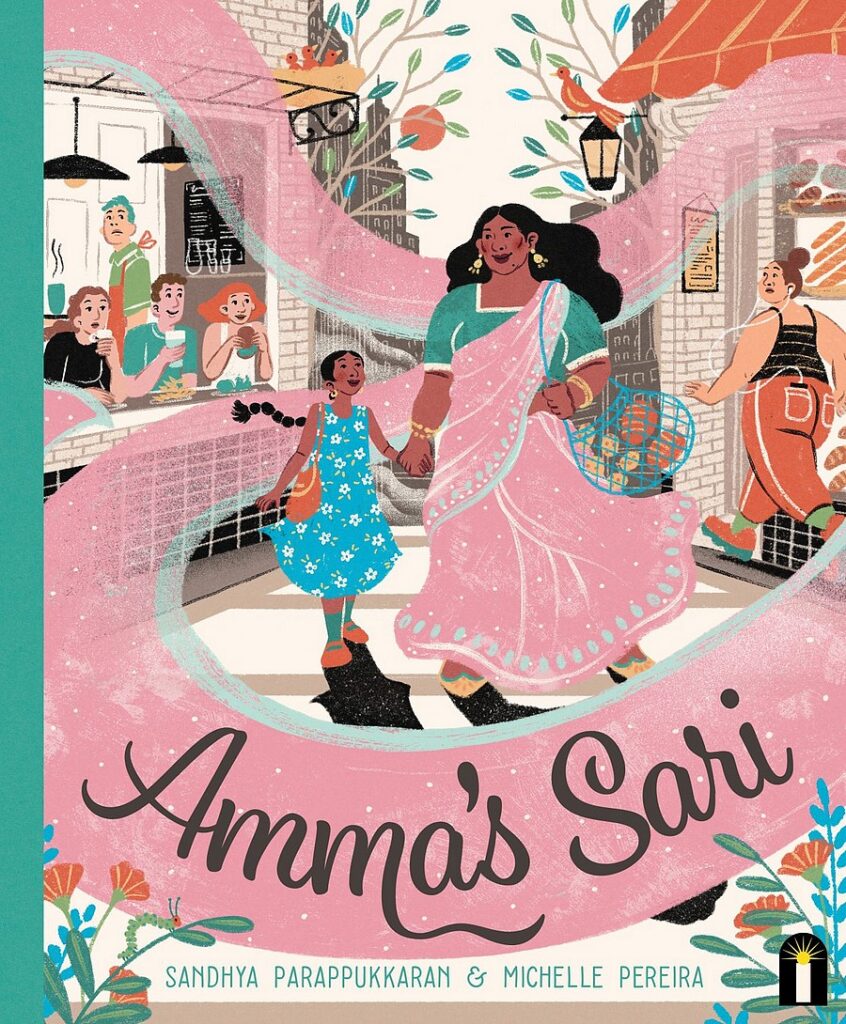
Amma’s Sari written by Sandhya Parappukkaran and illustrated by Michelle Pereira is the second collaboration by these two very talented creators who also produced the multi award-winning book, The Boy Who Tried to Shrink His Name, a CBCA 2022 Notable and also shortlisted for the CBCA 2022 Award for New Illustrator. Amma’s Sari is a powerful story told from the perspective of six year old Shreya, a second generation migrant as she attempts to reconcile her conflicting feelings and struggles about her Mother’s sari. At home, the sari her mother wears is a source of immense comfort, utter beauty and sheer joy for Shreya, yet when she is out with her mother, Shreya is acutely aware of the attention the sari seems to attract, making her feel uncomfortable and leads her to question her mother about it. Her Amma’s responses highlight the deep connection to culture, place and the nostalgia that the sari represents. It is so much more than a garment, it is profoundly connected to memories and identity and these provide a sense of belonging. This book is a glorious celebration of cultural heritage, family connection and learning to appreciate the strengths and beauty in difference.
Michelle Pereira’s exquisite and vibrant illustrations often feature Amma’s sari taking centre stage within the pages as it gracefully swirls though their house and out in the community, free and bold not confined in any way. The layout of the pages is so creative with the text intertwining with the illustrations in varied ways adding interest and meaning to the narrative. The illustrations are a feast for the reader’s senses as you are transported back to Amma’s childhood. The details stimulate your taste buds and you also feel like you can hear the hearty laughter ringing from the pages as Shreya and her mother enjoy such quality time together. There are a cast of culturally and racially diverse characters included in the illustrations which adds to the richness of the story and the celebration of difference and diversity. This book is brimming with inspiration for important conversations and has a wealth of visual literacy opportunities as students read the pictures and unpack the stories within them.
A detailed review for Amma’s Sari has been written in an earlier Reading Opens Doors blog post here.
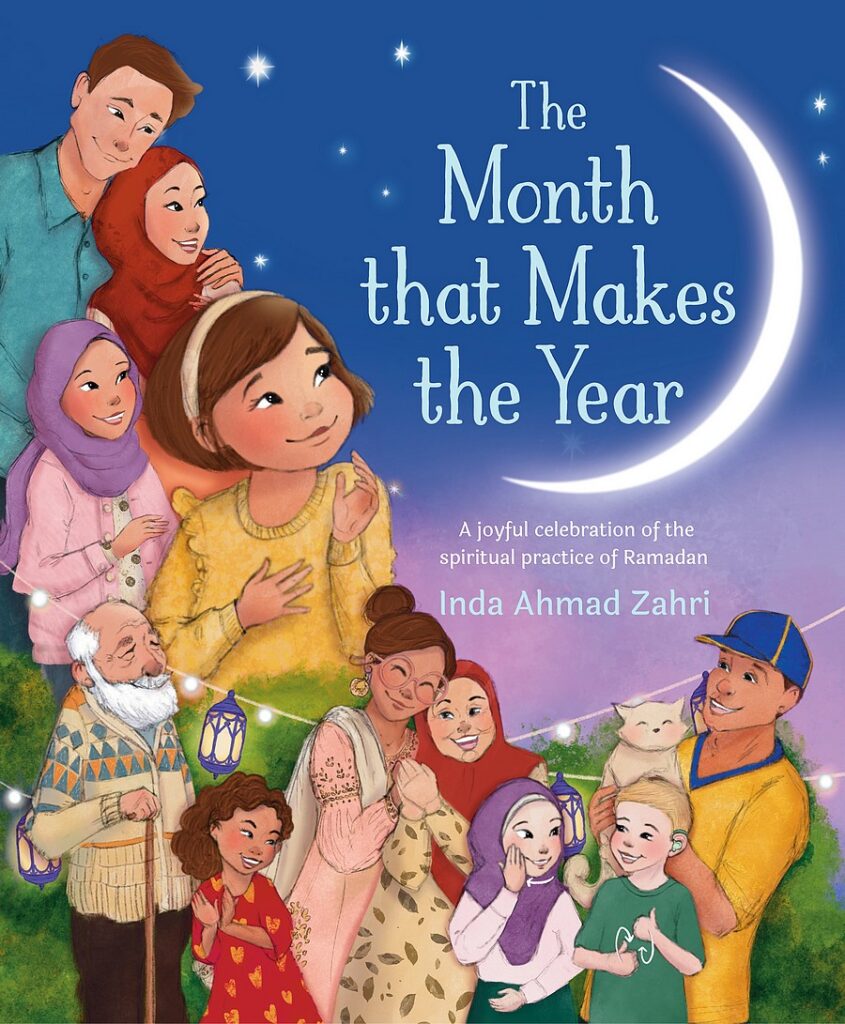
The Month That Makes the Year by Inda Ahmad Zahri and published by Allen and Unwin is a title I have ordered and waiting for it to arrive, so I do not have a detailed review yet. I have been following Inda’s socials and have read several wonderful reviews from other reputable sources confirming my belief that this book, which explores Ramadan through the eyes of a child and includes themes relating to Ramadan, Islamic culture, diversity and empathy, needs to be in this collection. My review will be added here soon.
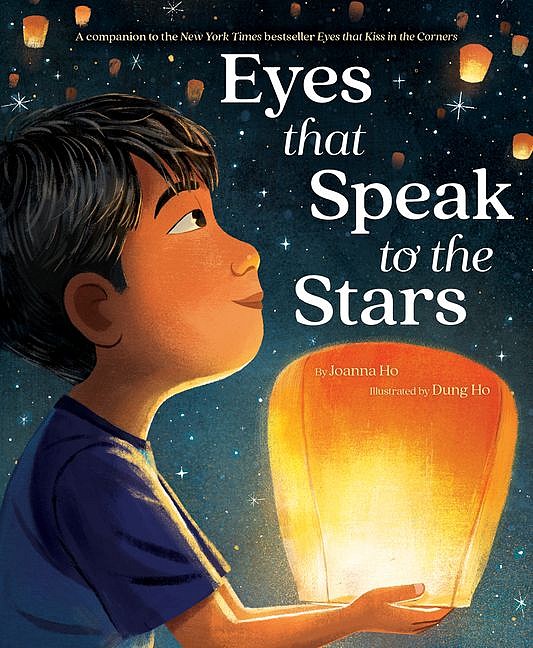
Eyes that Speak to the Stars written by Joanna Ho and illustrated by Dung Ho is a stunning companion book to Eyes that Kiss in the Corners. This is a powerful picture book and moving lyrical story about acknowledging and appreciating differences and family history as well as embracing what makes you unique. It is in the differences that there is beauty, infinite possibilities and power. This is a beautiful, uplifting and heart-warming celebration of identity, family, heritage, Chinese culture, shared history, acceptance and ultimately self-love.
In this story a young boy leaves school feeling despondent as his mind is preoccupied and his heart is deflated as he ponders a drawing he saw in class. Another child drew the boy with two lines for his eyes. The boy sees his appearance through the eyes of the student that drew this. For the young boy a sense of sadness and confusion wash over him as he doesn’t see himself in this way and certainly doesn’t see himself as different. He cannot relate to this drawing. Upon returning home the boy’s father, Baba, does a powerful exercise where he and his son stand together staring into the mirror and the reflection is a striking picture of a father and son sharing the same shaped eyes, his wise father tells him, “Your eyes rise to the skies and speak to the stars. The comets and constellations show you their secrets and your eyes can foresee the future. Just like mine”. This is a powerful moment as the boy sees his eyes through that of his adored father.
A detailed review for Eyes that Speak to the Stars has been written in an earlier Reading Opens Doors blog post here.

Playing at the Border: A story of Yo-Yo Ma by Joanna Ho and illustrated by Teresa Martinez is a stunning tribute and celebration of Yo-Y o Ma, Parisian born, Chinese American esteemed cellist, a humanitarian, a United Nations Messenger of Peace and recipient of the Presidential Medal of Freedom. On the banks of the River Grande, the border between the United States and Mexico with “feet planted on the soil of one nation, eyes gazing at the shores of another” Yo-Yo Ma played his cello he named Petunia. His music was a form of connection and unity, a bridge where there was division.
Included in the back matter, Joanna Ho shares information about the Bach project Yo-Yo Ma started in 2018, “a two-year effort to increase global connections through music. On this journey he performed Johann Sebastian Bach’s six suites for solo cello in thirty-six places around the world. Along with his concerts, Yo-Yo Ma collaborated with local community leaders at each site to plan a day of action to build a more connected future.” This book shares the story of Yo-Yo Ma playing at Rio Grande in 2019.
This book is about Yo-Yo Ma’s childhood, his achievements, one cello, music from the past and how Yo-Yo Ma “played at the border, between nations, between cultures, between languages, between centuries and built a bridge”.
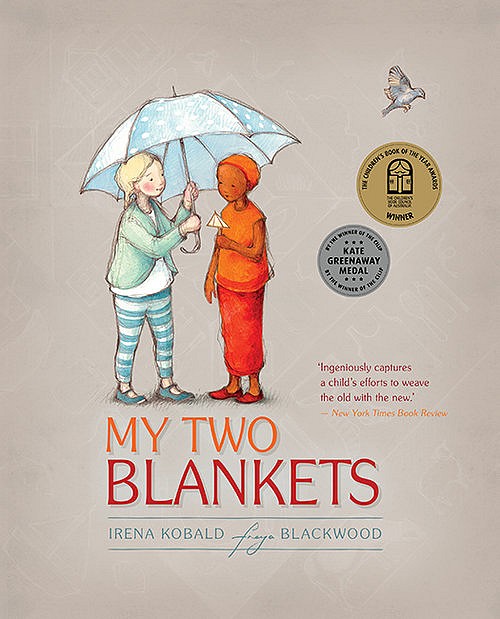
My Two Blankets by Irena Kobald and illustrated by Freya Blackwood shines a spotlight on the foreign feeling and strangeness of being in a new place. This story is told from the perspective of a young girl, Cartwheel, who has recently arrived in a new land with her Aunty and is struggling to adjust to her new world, with new people, a new language, foods, animals and plants, even the wind feels strange. She sees and feels more difference than sameness, resulting in her feeling isolated and alone.
Cartwheel finds comfort in wrapping herself in a metaphorical blanket of her own words, memories and sounds, a blanket that is illustrated using earth tone colours as well as symbols and pictures that remind her of home. This blanket is a metaphor for her home and culture that is familiar and safe to her. While exploring her new home with her Aunty, Cartwheel visits a park. A friendly girl smiles and waves at Cartwheel. While these welcoming gestures are appreciated by Cartwheel and make her feel happy she is unable to interact with the girl because of the language barrier which is also deftly conveyed in the illustrations.
When the girls next meet in the park the friendly girl starts teaching Cartwheel new words and continues to do so over several park plays. Cartwheel’s new and expanding vocabulary becomes the beginning threads of a new metaphorical blanket, in predominantly blues and greens and containing pictures of foods, animals, objects and nature from her new home. Cartwheel learns that both blankets are a source of comfort and she now has two stories from two places which are part of her. Be sure to take special note of the final joyful illustration!

The Day Saida Arrived by Susana Gómez Redondo and illustrated by Sonja Wimmer pairs well with My Two Blankets.
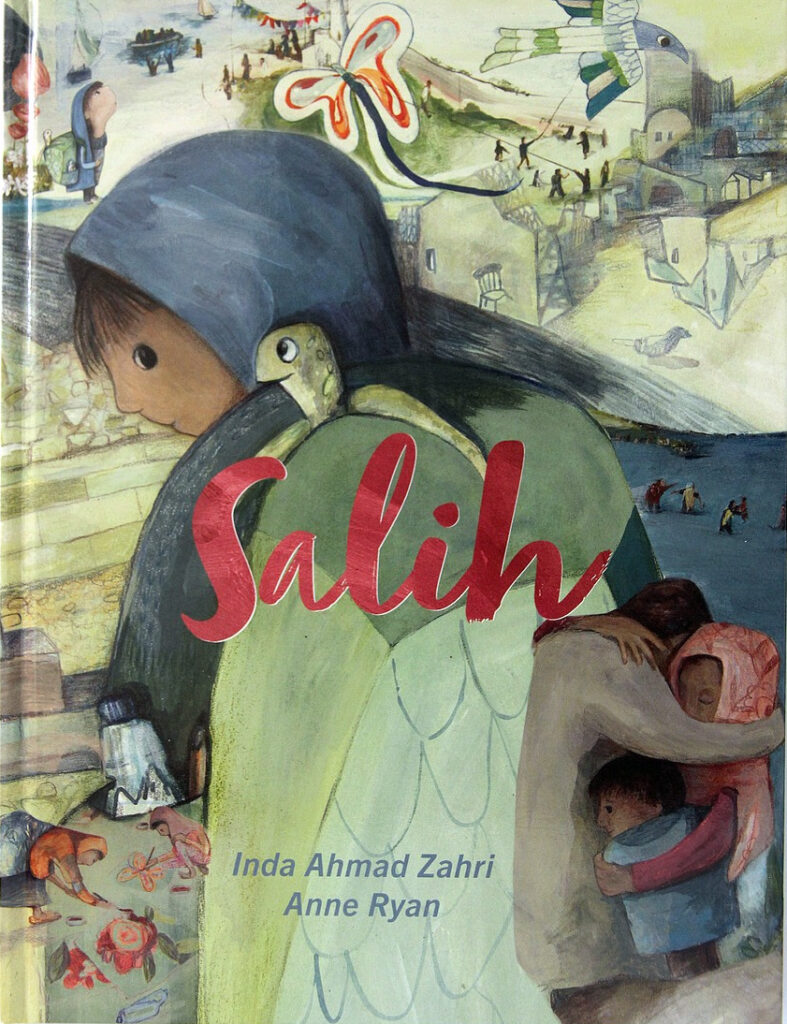
Salih by Inda Ahmad Zahri and illustrated by Anne Ryan is a refugee story of courage, hope and kindness. It centres around the character of Salih, a young boy who carries his home on his back, similar to that of a turtle, because he and his family, together with many other people have fled their war-torn homes in search of a safe haven. They have left behind all that is familiar; family, friends and taken with them their memories. These memories include joyful times, cosy rituals and an inspiring teacher who has touched their lives. Happy memories that are relatable, experiences readers will be able to identify with and likely share with Salih. Nestled together with these positive, comforting recollections are the dark, frightening times that include deafening blasts, signs of devastation and people suffering.
In a refugee camp, Salih meets a painter and together with other refugees he finds comfort in painting precious memories. These are bright pictures of hope and Salih rolls the artworks up and places them in bottles which he carries with him on a perilous journey across a raging ocean to a new home. After a terrifying voyage and much pleading with the sea to be calm, the ocean eventually quietens and the refugees arrive in a new land…a place that received the most unexpected gifts from the ocean. These gifts positively impact the arrival of the refugees and in turn this has a positive ripple effect on the community.
The mesmerising, immersive illustrations with nuance are full of exquisite details and emotion that illuminate the text. This book beautifully highlights the human face of refugees and enables the reader to connect with Salih. As the story unfolds the reader learns snippets of information about several refugees and their individual stories, this informs the reader about their joys, hopes, passions, fears and trials which helps build a connection, as common ground can be identified. This book explores in a nondidactic, sensitive way that all humans, regardless of their circumstances, share feelings of joy, loss and possess a deep desire to have the opportunity to live without fear and be accepted.
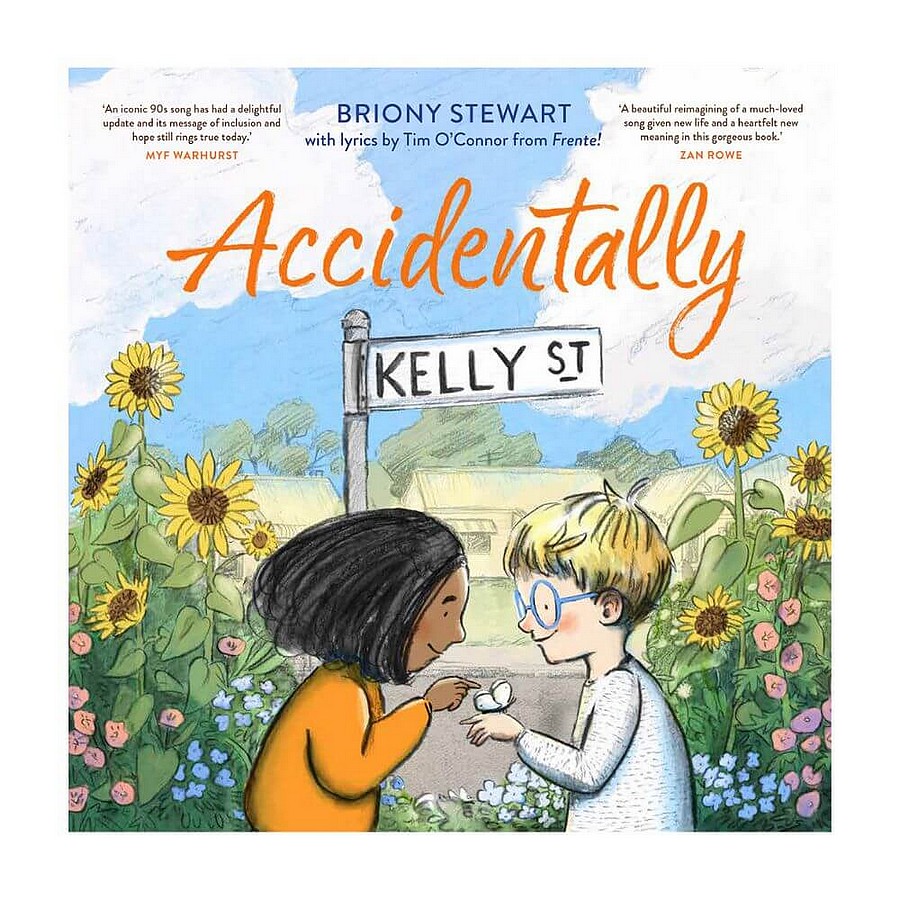
Briony Stewart has reimagined the 90s iconic song, Accidentally Kelly Street in her latest ebullient picture book published by Affirm Press. Her beautiful and lively illustrations have created a new timely narrative for this generation about starting life in a new place, as well as the power and beauty of community. The lyrics for this iconic, highly catchy and memorable 90s song were written by Tim O’Connor and sung by the band, Frente.
Briony’s joyful and hopeful interpretation of this song begins with a family moving into a bare and stark home on Kelly Street. Briony deftly portrays the different emotions and feelings each family member experiences as they step into their new home – there is a mix of trepidation, fear of the unknown, excitement and minds swirling with imaginings and questions. While the parents set up the new home, the older child explores her new surroundings and is quick to connect with the neighbours and discover just what it means to reside on Kelly Street.
A detailed review for Accidentally Kelly Street has been written in an earlier Reading Opens Doors blog post here.
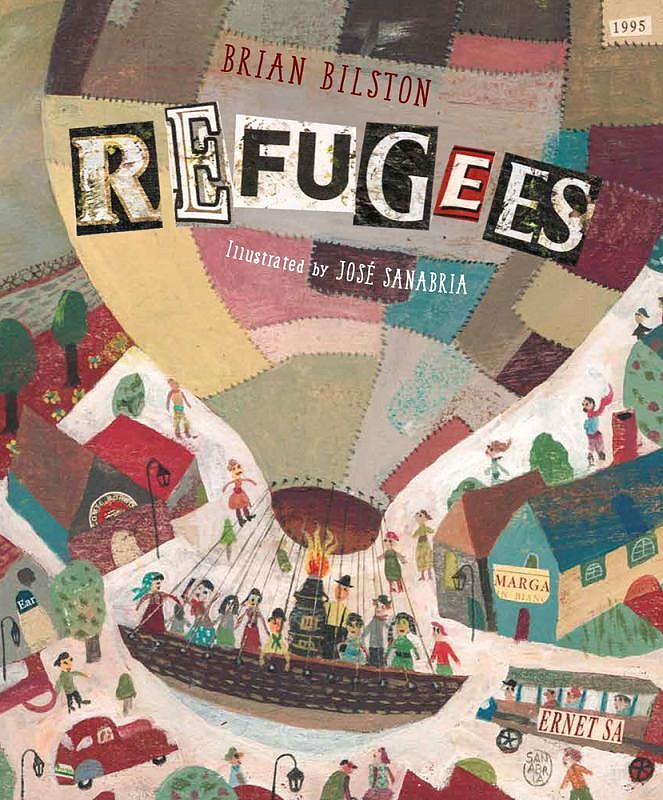
Refugees by Brian Bilston and illustrated by José Sanabria is a picture book containing Brian Bilston’s powerful poem, titled, ‘Refugees’, which can be read from top to bottom and then read backwards, from the last line to the top of the poem to convey two opposing points of view about refugees. It contains two voices. One view is prejudiced against refugees, full of hatred and intolerance, not willing to welcome people fleeing their countries, their homes, in sheer desperation because of war, famine, slavery, intolerance, economic and political upheaval, often in harrowing conditions fraught with danger and the real possibility they may pay the ultimate price, their lives. This agonising decision is made in the hope that those seeking refuge may have the opportunity to live in peace and safety. The opposing voice is rooted in compassion, empathy, tolerance and understanding. This book is structured in a way that the first half of the book is written (with all of the text presented on the left pages) so that the reader reads the poem from the first line through to the end of the twenty-four line poem. In the second half of the book, the text (written on the page on the right) is written starting with the last line of the poem through to the first.
This book is an excellent resource to encourage conversations that have the power to dismantle bias as well as foster empathy and inclusiveness.
It is important to add that this picture book is suitable for children in upper primary school, as the words at the beginning of the book are harsh. It is vital to explicitly explain to students, prior to reading the book, that the text contains confronting words. Then explain that the book needs to be read in its entirety. Once the entire book is completed, reflection and discussions can be had.
A detailed review for Refugees has been written in an earlier Reading Opens Doors blog post here.
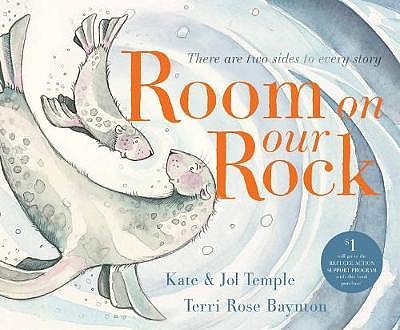
Room on our Rock by Kate and Jol Temple and illustrated by Terri Rose Baynton is a very clever story that you must read twice and it will elicit a different emotional response each time. Read it forwards and then read it backwards to see two different points of view about sharing, welcoming and being inclusive. This is the story about a mother seal and her cub that must leave their home and find a new one. Reading the book from front to back tells a cruel story of rejection, intolerance and refusal to accept the seals. Reading the book from the last page to the first tells a very different story, one of acceptance from compassionate seals. It is astonishing to also see how the illustrations perfectly complement the two very different narratives. This is a powerful and memorable book to share with children to help build capacity for empathy.
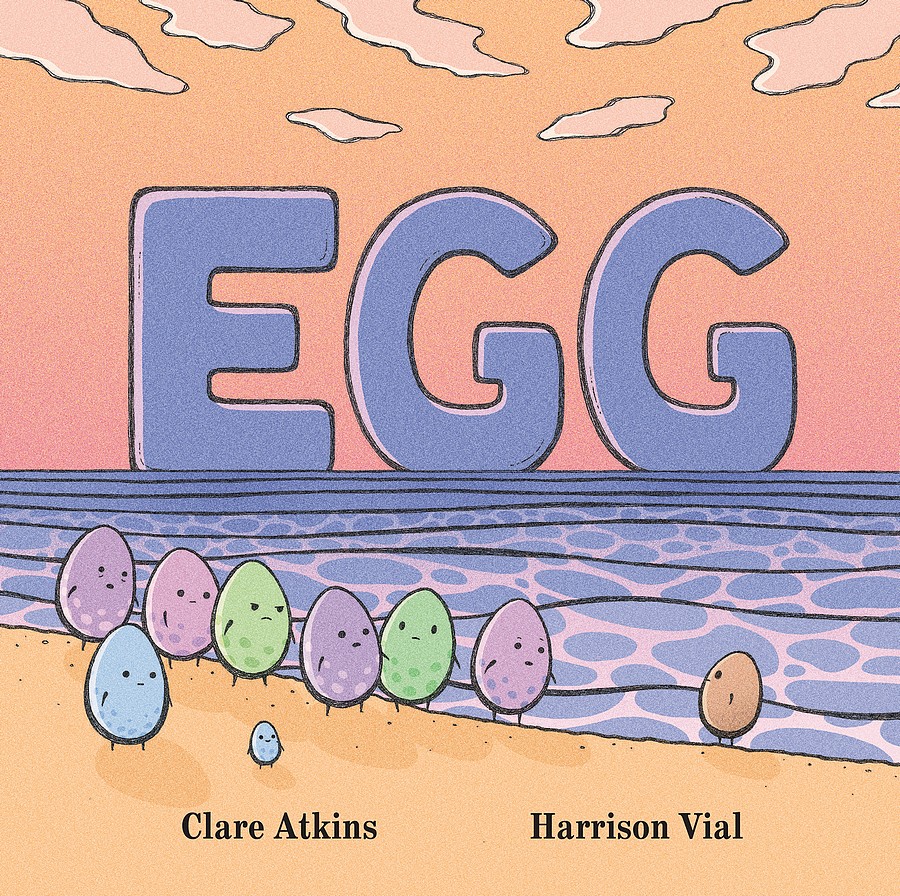
Egg by Clare Atkins, illustrated by Harrison Vial and published by University of Queensland Press (UQP) is a beautiful, thought provoking and highly engaging fable with a cast of eggs as characters; eggs with distinct personalities, thoughts about their island home and firm opinions about what happens when a newcomer washes up on their island. This beautiful picture book cleverly juxtaposes the past when the world was not impacted by climate change with present times where the island in the story has suffered environmental damage. The story explores how solutions to environmental problems are possible, it just takes one good egg to be brave and that could be the first step to making a difference, one that may benefit a whole community. It is in this idea that using eggs as characters is a genius masterstroke as eggs are symbolic of life and rejuvenation of the life cycle. The beauty of this deceptively simple picture book is that it can be read on so many levels and will serve as an excellent segue into rich discussions as a multitude of themes are explored, including belonging, refugees, xenophobia, discrimination, fear of the unknown, kindness, acceptance and climate change.
A detailed review for Egg has been written in an earlier Reading Opens Doors blog post here.
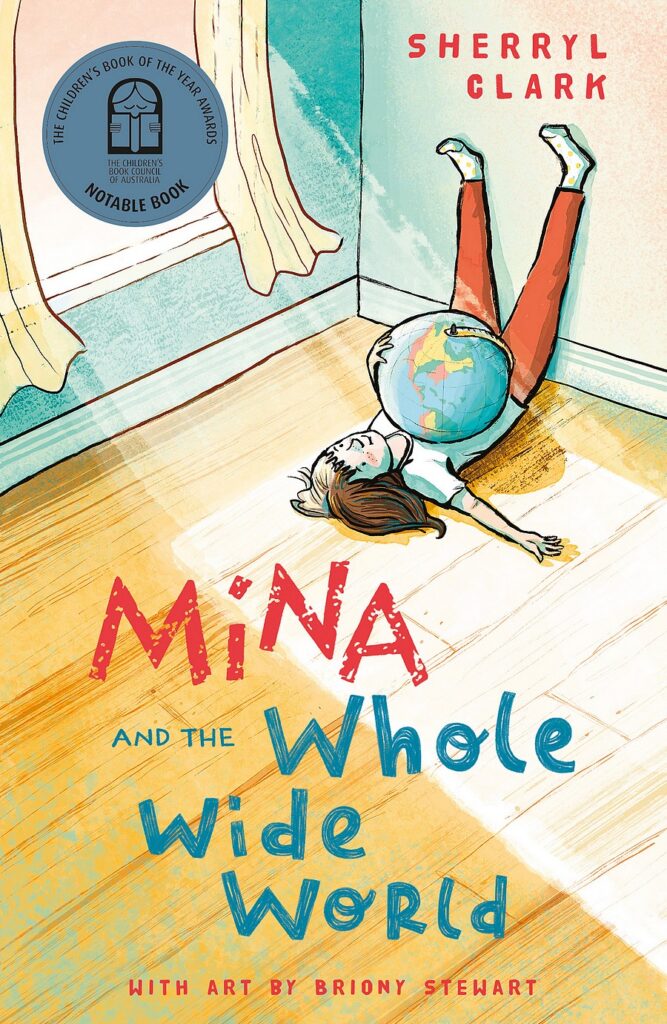
Mina and the Whole Wide World by Sherryl Clark is a powerful verse novel published by University of Queensland Press (UQP) that draws you into Mina’s world right from the very start. Mina shares a room with her little brother, Georgie, “he’s a wrecker”, so Mina is desperately looking forward to moving into her very own room where she can unpack her box of precious things and then she will no longer need to hide this box of treasure from Georgie. Mina’s room is almost ready; one more coat of paint and then it is all hers. When her dream of owning her own room is nearly realised, Mina’s parents tell her that someone is coming to live with them for a little while and they will need Mina’s room. Mina is shattered and is devoid of words as the reality of this sinks in. Mina feels voiceless as she feels robbed of what was hers and the devastation as well as an enormous sense of loss causes her to withdraw and not speak. This person who is coming to stay is Azzami, he is a refugee. His mother is in hospital and his father has passed away.
Briony Stewart’s evocative illustrations highlight Mina’s reactions and give the reader an even greater appreciation into Mina’s perspective. The use of verse and format of the text allows readers to digest the words, visualise what is happening, imagine and make connections. This endearing verse novel will tug at your heart and no doubt encourage conversations about attitude towards refugees in Australia.
A detailed review for Mina and the Whole Wide World has been written in an earlier Reading Opens Doors blog post here.
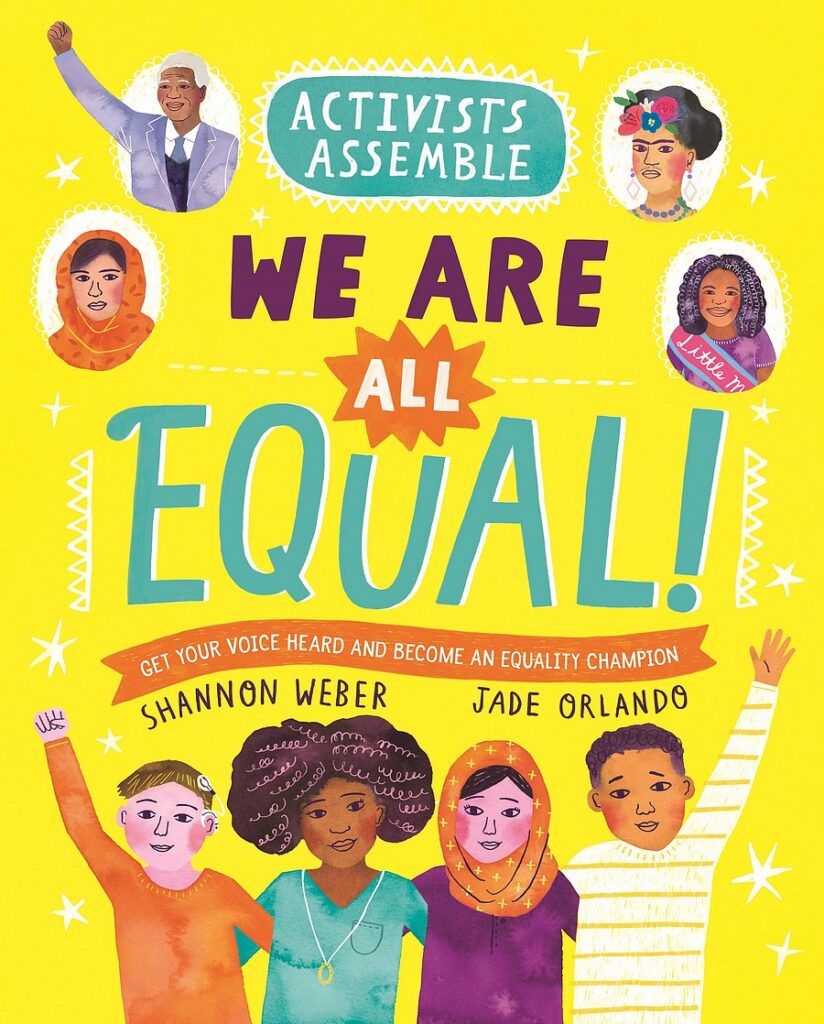
Activists Assemble: We Are All Equal! by Shannon Weber and illustrated by Jade Orlando – Review coming.

Thanks for all of these resources Elise. It is great to go back through your blogs and find suggestions for what we need. There are some great suggestions here. We just need a library money tree because I want to buy them all!
Thanks again.
This is wonderful to hear! Thank you Tricia for taking the time to leave such a kind comment. I really appreciate you doing this.